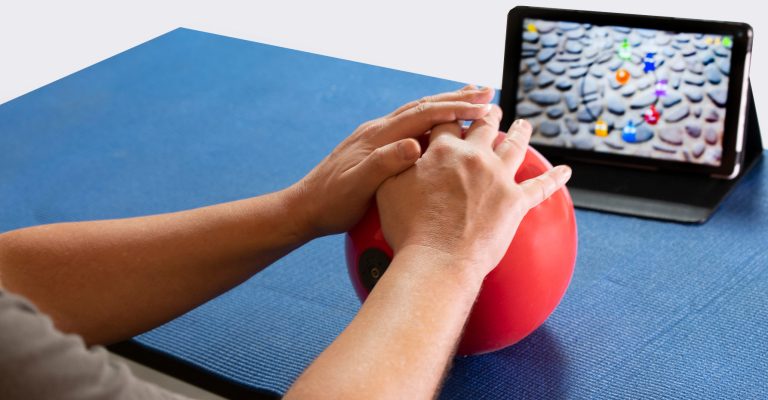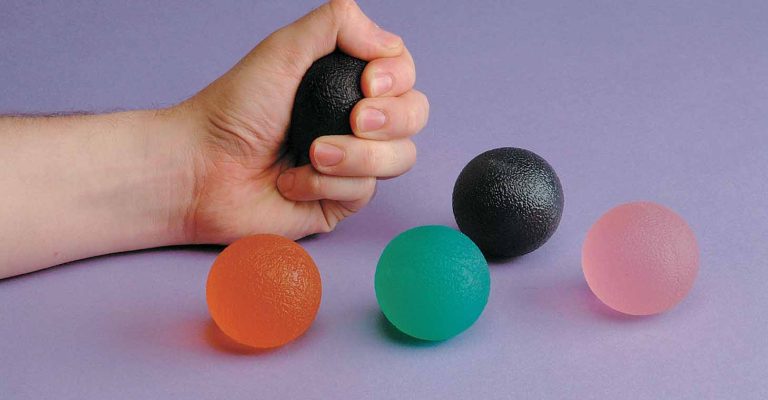
Hand therapy ball exercises are a fantastic and cost-effective choice for those who have had a stroke and want to regain strength and agility in their hands.
Because they are not complicated and can be used in various ways, hand exercise balls make it easy to do a diverse array of useful workouts designed to strengthen the hands.
This article will discuss hand therapy ball exercises that have proven to be the most successful in enhancing fine motor skills after a stroke.
Practices that include a lot of repetition are the most helpful when someone has had a stroke to speed up healing in the hands. The brain will be stimulated, and its capacity to rewire itself will be promoted if one consistently practices these effective hand therapy ball exercises.
You should begin with one set of 10 repetitions of each exercise; then, as your strength improves, you should aim to do more sets. You should try to perform these exercises multiple times per day if you are not experiencing any pain from doing them.
This hand therapy ball exercise can help improve your grip so that it is simpler to hold items, lift them, and release them. Stimulating the ball will focus the flexor muscles to build strength for picking objects up. It will also be crucial to practice dropping the ball, stimulating the extensor muscles that enable you to let stuff go from your hand. In relieving joint discomfort, this activity also helps alleviate tension and anxiety.
Put your fingers and thumb around the therapy ball and squeeze it as if you were making a fist. After applying pressure for a moment, let go of the ball and spread your fingers as far as possible.

You should grasp the hand therapy ball using your extended fingers and thumb for this particular exercise. And by extended, we mean maintain all your fingers straight. This will assist in strengthening muscles different from those targeted when the fingers are curled.
Pinch the ball for a longer time to make the hand therapy ball exercise that you are doing more difficult.
The thumb is crucial in different hand tasks like pinching and gripping. Thus it’s necessary to develop its muscles to control better.
Place the therapy ball on your palm while keeping it as flat as possible, using your thumb to hold it in place. Your palm should be in a flat position.
After that, roll the ball up and down your palm using your thumb to move it. This motion focuses almost exclusively on your thumb.
Put your hand on top of the hand treatment ball on a table, and then put the ball down.
The next step is to roll the ball from the bottom of your palm to your fingers while maintaining a flat hand.
If you apply an insufficient amount or an excessive amount of pressure, the ball will be difficult to manipulate. Because of this, individuals can practice adjusting and maintaining a certain amount of pressure on the ball when participating in this hand therapy ball exercise.

Unlike the Power Grip exercise, you won’t be utilizing your thumb in this hand treatment ball exercise.
Instead, hold the therapy ball in your hand and push onto it with all your fingers, save your thumb in the interest of the press.
Take note of how much more difficult it is to squeeze the ball when you cannot use your thumb. The muscles that enable you to flex your fingers will get stronger due to this exercise.
During this hand treatment exercise, your thumb will be targeted specifically, and you will be encouraged to move it through its full range of motion. As a consequence, it will help avoid stiffness and increase control.
Put the treatment ball on the palm of your hand. Maintain as much flat a surface as possible with your palm, and use your thumb to keep it in place. After that, roll the ball around in a circle on your palm by using your thumb to guide it.
Individuals can strengthen the muscles that adduct their fingers by working with the hand treatment ball. These muscles enable you to draw the fingers together, which are significant in gripping items.
Put the treatment ball between your two fingers and gently squeeze them together to compress it. Then let go of the pressure. You may perform this between various combinations of fingers, so be sure to work out all your fingers!
It is important not to forget about any of your fingers, especially the ones that are more difficult to work with, such as your ring and pinky fingers.

This exercise uses a therapeutic ball and is very similar to the Thumb Roll; however, instead of rolling the ball in a circular motion, you will be rolling it from side to side.
Start by putting the treatment ball on your palm and use your thumb to hold it in place. The next step is moving the ball from left to right using your thumb.
It is essential to modify the hand treatment exercises to meet the objectives you have set for your rehabilitation.
Some individuals may need these exercises to strengthen their hands, particularly those individuals who like engaging in handicrafts.
When there is a possibility of neurological damage, the goal of striving to enhance resistance should not be the only focus of treatment. Instead, the emphasis should be placed on repetition, which gives the brain the stimulus it requires to reorganize itself and make new neural connections.
The capacity to use both hands to grip and let go of items, type on a computer, button a blouse, or even write a message to someone you care about is crucial to having a good quality of life. If your stroke has robbed you of this ability, take action to improve your quality of life by beginning an at-home exercise program. As you work to retrain your brain following the neurological damage caused by your stroke, these finger and hand exercises for stroke recovery can assist you in regaining the use and skill of your hands.